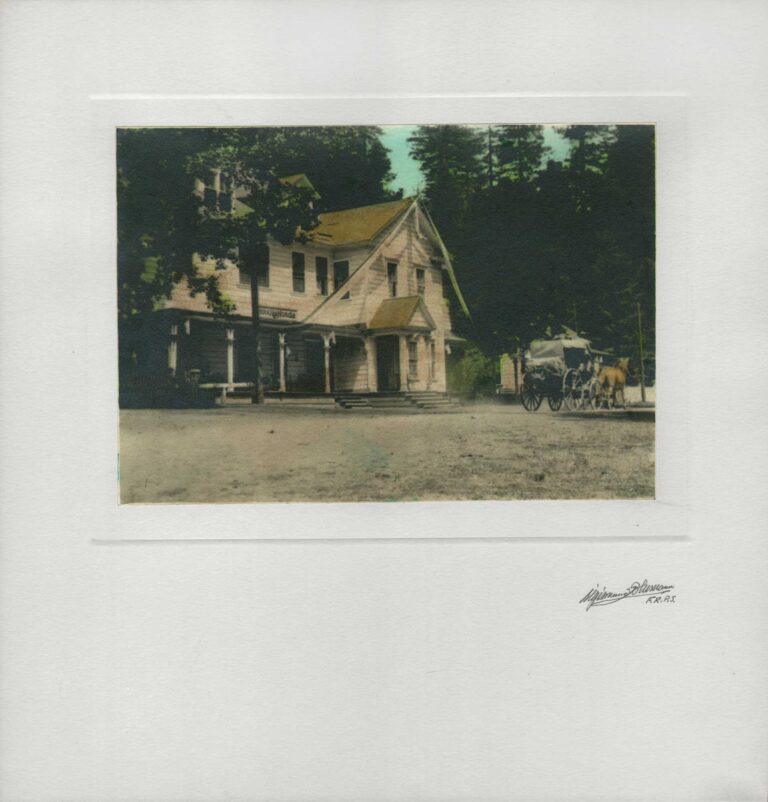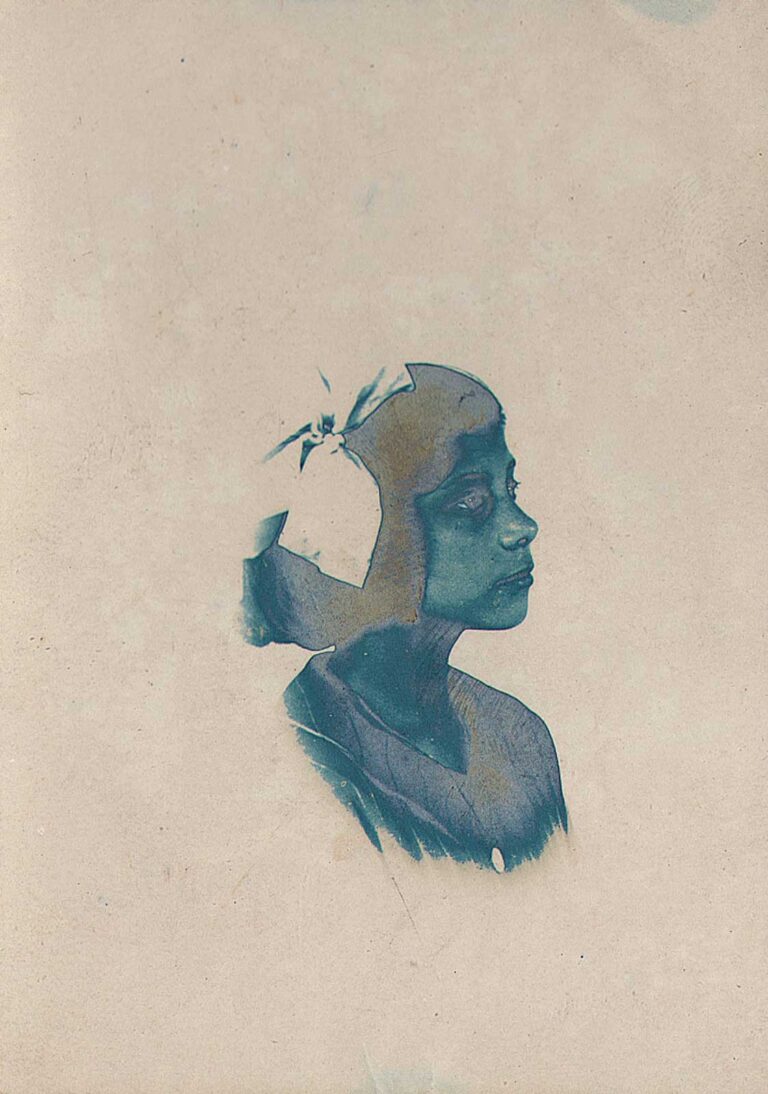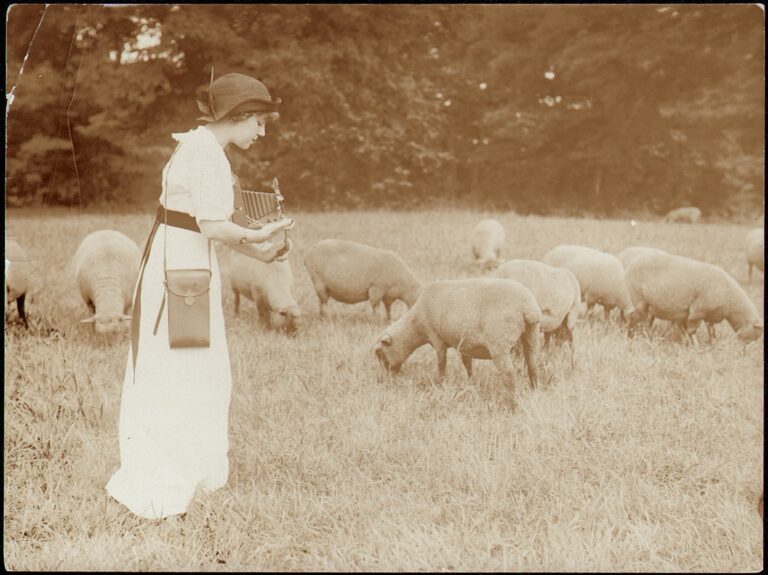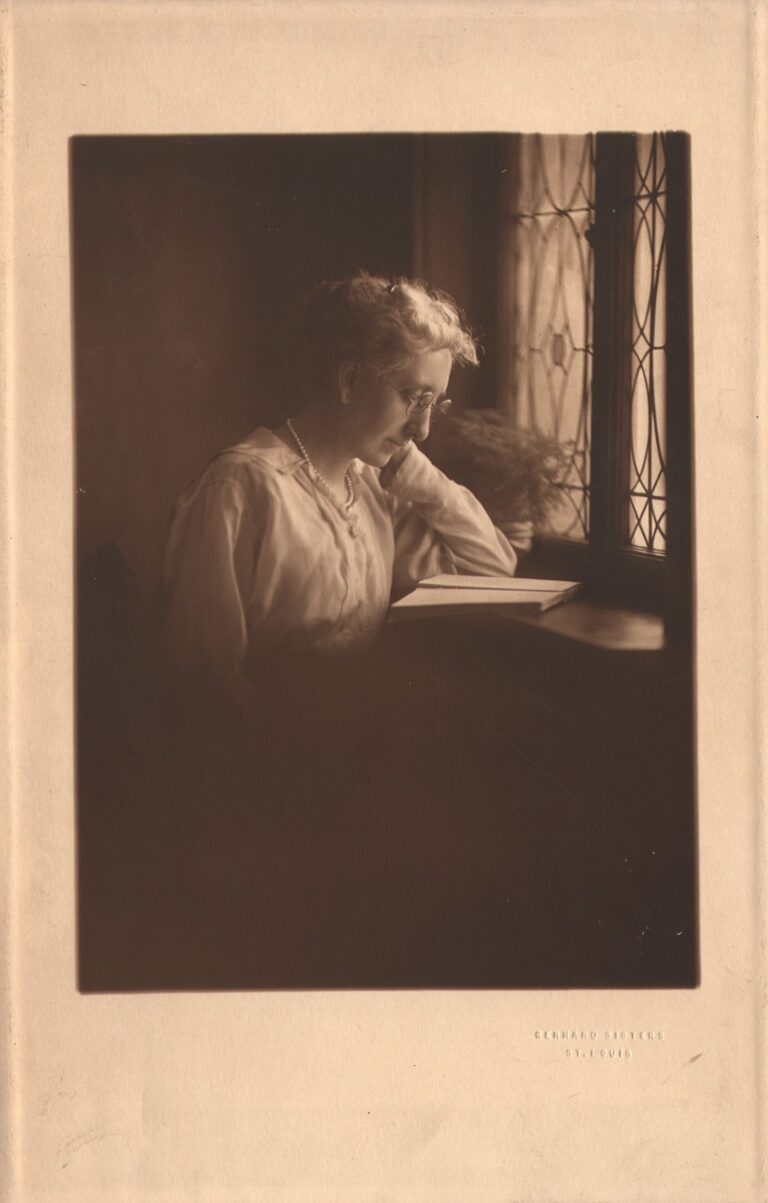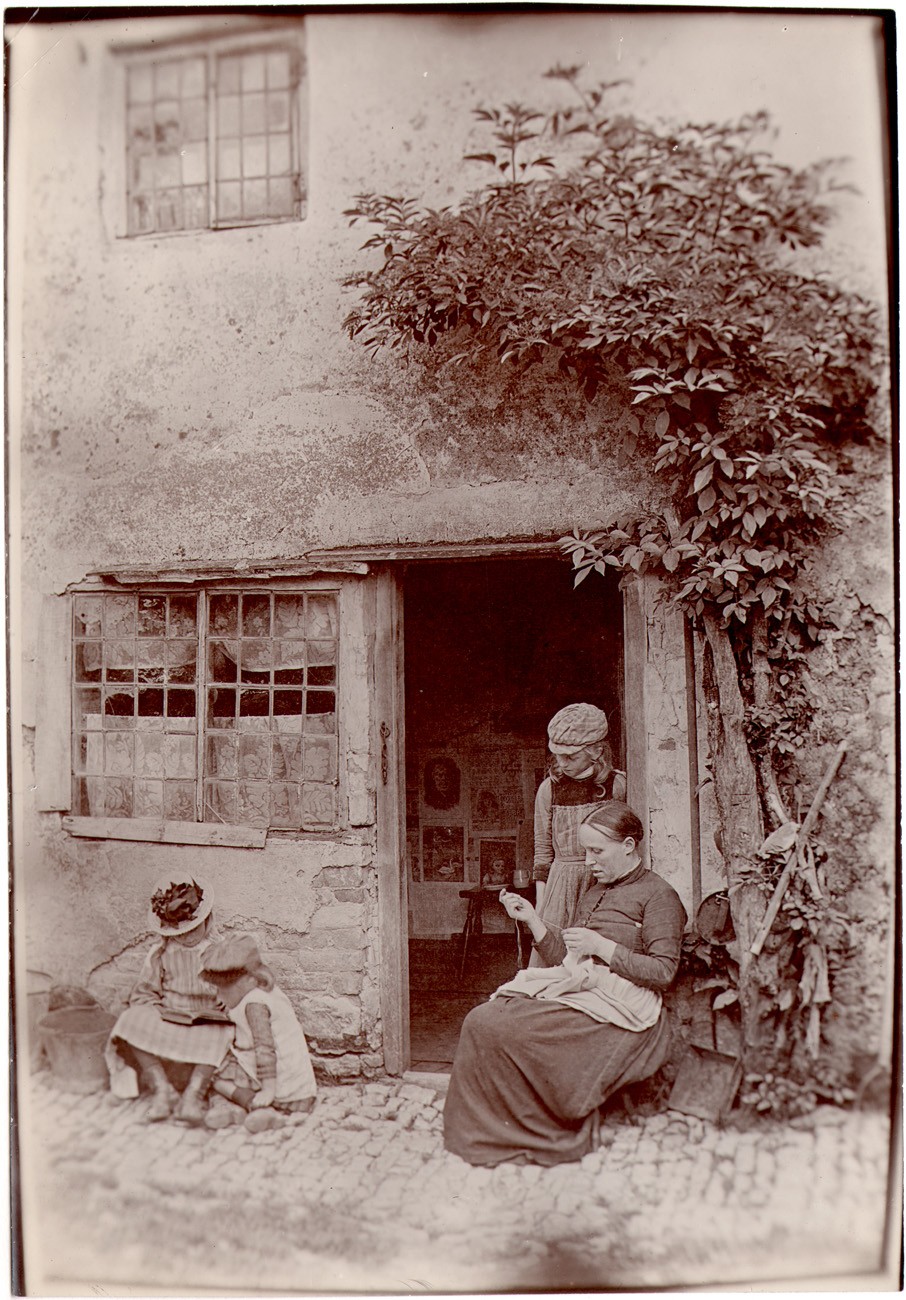
The Cottage of Mrs. Alf Pearce, at Long Crendon, Buckinghamshire
London’s Photographic News in 1888 reprinted a “communication” by the English photographer Joseph Gale (1830-1906) to London’s Camera Club using this photograph (The Cottage of Mrs. Alf Pearce, at Long Crendon, Buckinghamshire-circa 1886) as an example. After Gale was rediscovered later in the 20th century, it was reprinted as a full page plate in several volumes, including A Victorian Country Album- The Photographs of Joseph Gale, (1.) and Victorian and Edwardian Photographs. (2.)
An excerpt by Gale on his working method using this photograph:
“Here is a cottage—one of many in the village—very pretty, very nice, with the doorway partly overgrown with vine, and some worn red brick steps leading up to it, and a latticed window abutting on it. One would not think of taking that as it is; but what a capital setting for a group! Let us knock at the door and ask the occupier if we may take a “sketch ” of her pretty doorway (if we were to call it “a photograph ” she might mistake us for itinerant professionals, and expect to be asked some day for payment—such things have happened). It maybe she is a comfortable and obliging sort of woman, and would not our asking her to stand in the doorway with a broom in her hand, and one or two of those fair-haired children seated on the step, perhaps with their dolls or their school slate. Yes! she it pleased with the thought of it; she won’t mind if you ask her to let you borrow a pail, or a jar, or a stool, and the bigger girl may come, the other is going to school.
Now, then, treat the subject as you think best. The woman may be seated, and the girl standing, slate in hand, doing her sums, or standing broom in hand or knitting needles, while the girl prepares to move off with a basket on her arm. There are half-a-dozen ways of treating this doorway and these two figures, open to your fancy; but let it be a simple, natural treatment of the subject, the accessories subservient to the group, and only such as you would be likely to find at the cottage doorway in the ordinary way. Do what you can to make the people feel easy and at home with you ; occupy them so that they may think of what you have set them to do, and not of the camera; and be careful not to try your sitters’ patience too much. You know the capabilities of your lens, and should know bow much will be comprised in your view. Get the focus and the margins of your picture, and then set your models within it where you have made up your mind they will look best and most natural. It ought to be scarcely necessary to focus again, but a last brief look on the ground-glass may be taken, and the plate inserted into the camera. Your figures in position, you may do all the little finishing touches to the hat, the hands, or the attitude—tee that the accessories are right ; and perhaps you may first practice them in keeping still for two or three seconds, telling them you are not going to take them this time. If they behave as you wish, they will have recovered their breath for the real exposure, for it is sometimes an awful ordeal to them (unless you hare done your part nicely and kindly); it will not be so bad the next time. But give them due notice of the real exposure, and due notice when it is done, for they are grouped, not looking towards the camera, and will think it necessary to keep still until you liberate them. Our sitters have behaved properly, the lighting was good, and everything favourable. One of those silver coins we have taken care to provide ourselves with will be an acceptable present to the little girl; or, just think; with such a negative as this will turn out, it will be well worth a shilling paid to the mother to buy a book, or another doll for the children. But do not promise a copy of the photograph unless you mean conscientiously to fulfil. The promise is treasured up, and the photograph looked forward to anxiously, and great will be the disappointment at its non-arrival, and disrepute of the amateur. Now let us help, or offer to help put back the things in their places, and move on, as an old timber waggon and rustic team of horses that passed by while we were busy has pulled up at the roadside inn, a little way up the village, and we must see if we can make use of it.” 3.
Print details and former provenance: verso: pencil inscription in hand of Margaret Harker: typed white label: 489
Kodak specimen proof print (P.O.P?)
Atributed to Joseph Gale,
prob one of his ‘doorways’ series
c. 1890.
typed white label: The HARKER Collection
It is unclear as to the date of this later copy print: Brian Coe states: …”but from 1888 he adopted the platinum process, which gave an image in platinum rather than silver, and most of the surviving prints made by him are in this form (except those made by Kodak Limited after his death, which are on Solio gelatine-silver printed-out paper). 4.
Notes:
1. pictured: dust jacket verso, p. 26: in: A Victorian Country Album- The Photographs of Joseph Gale: by Brian Coe: The Oxford Illustrated Press Limited: Somerset: 1988
2. pictured: p. 71: this vintage photograph appeared to be used as source material: in: Victorian and Edwardian Photographs: by Margaret F. Harker: Charles Letts Books Limited: London: revised edition-1982
3. “Out with a Camera” : Suggestions as to Choosing Subjects: by J. Gale: in: The Photographic News: A Weekly Record of the Progress of Photography: printed and published by Piper and Carter: London: September 7, 1888: p. 566
4. Ibid: Coe: pp. 27-28
